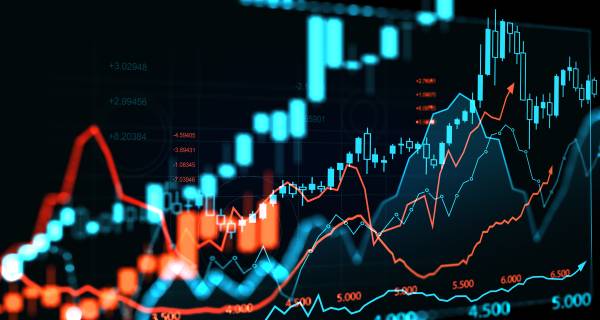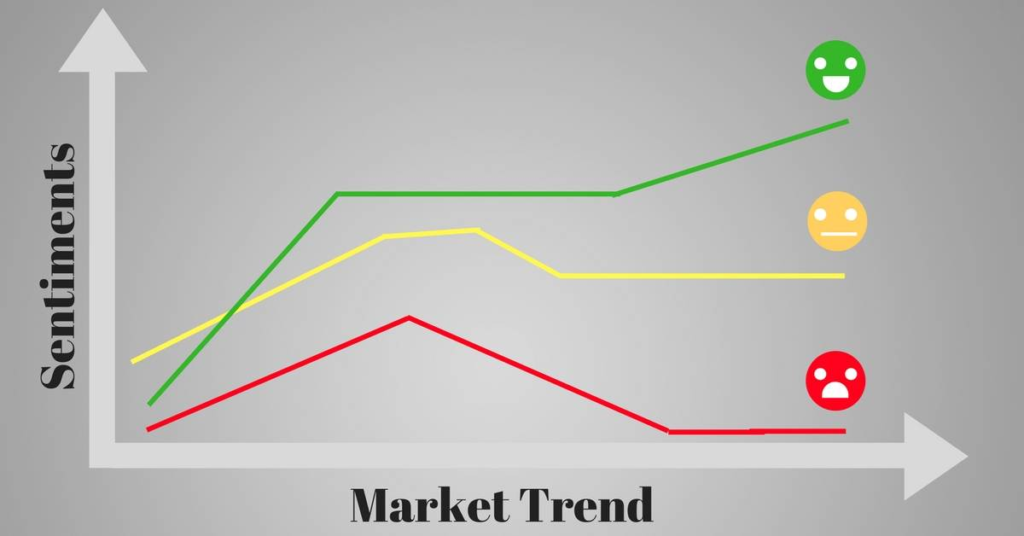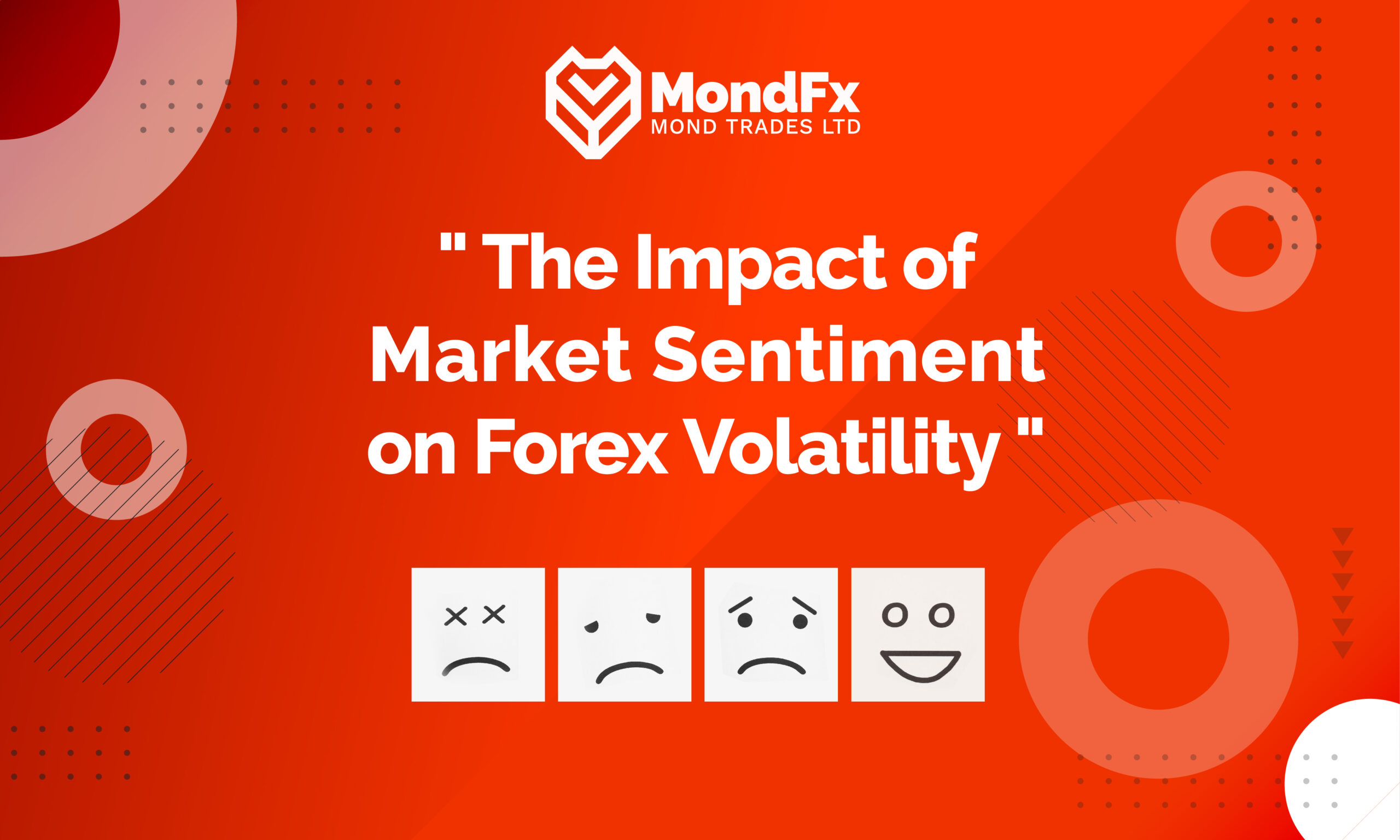The Forex market is one of the largest and most dynamic financial markets in the world, where currencies are traded globally. Due to the high volume of transactions and its sensitivity to economic and political events, this market experiences significant volatility. One of the key factors shaping this volatility is market sentiment. Market sentiment, as an intangible psychological force, plays a vital role in traders’ decision-making and price movements. A proper understanding and analysis of market sentiment can help traders make better decisions and manage their risks in this complex and volatile market.
A Brief Overview of the Forex Market and the Importance of Market Sentiment
The Forex market is where various currencies from around the world are traded against each other. This market operates 24/7 and has high liquidity due to the substantial volume of transactions. Traders engage in buying and selling with the goal of profiting from changes in currency rates. However, one of the main challenges in this market is accurately predicting price fluctuations. This is where the importance of market sentiment becomes evident. Market sentiment, reflecting the collective opinions and forecasts of traders, can serve as a strong indicator for predicting future market movements.
Definition and Importance of Market Sentiment
Market sentiment in Forex generally refers to the psychological state and collective attitude of traders toward a currency or the market as a whole. This sentiment can be bullish, indicating optimism and an expectation of rising prices, or bearish, reflecting pessimism and an expectation of falling prices. These sentiments are influenced not only by technical and fundamental analyses but also by psychological factors and economic news.
The Importance of Understanding Market Sentiment for Traders
Understanding and recognizing market sentiment is crucial for traders because these sentiments can act as a leading indicator in trading decisions. By analyzing market sentiment, traders can:
– Predict Price Movements: Market sentiment often shifts before significant price changes occur. Therefore, recognizing the direction of market sentiment can help traders anticipate future price movements.
– Manage Risk: By understanding market sentiment, traders can better manage their risks. For instance, during periods of strong bearish sentiment, they might decide to reduce their open positions to avoid potential losses.
– Determine Entry and Exit Points: Market sentiment can help identify optimal points for entering or exiting trades. Traders can time their trades more effectively by paying attention to changes in market sentiment.
– Utilize Appropriate Trading Strategies: Recognizing market sentiment can assist in choosing suitable trading strategies. For example, in strongly bullish markets, trend-following strategies may be more effective.
– Avoid Emotional Decision-Making: Understanding psychological factors and market sentiment can help traders avoid emotional and irrational decision-making. This is particularly important during times when the market is influenced by major news or economic events.
In conclusion, analyzing and understanding market sentiment is a vital part of the trading process in the Forex market that can help traders make better decisions and achieve greater long-term success.
Types of Market Sentiment
In the Forex market, market sentiment can generally be divided into two main types: bullish sentiment and bearish sentiment. Each of these sentiments represents the collective attitude and expectations of traders regarding the future of a currency or the overall market, and they can significantly influence price movements and trading volumes.

Bullish Sentiment
Bullish sentiment arises when the majority of traders are optimistic about the future of the market or a specific currency and expect prices to rise. This type of sentiment is usually accompanied by an increase in buying volume and rising prices. Some characteristics and indicators of bullish sentiment include:
– Increased Demand: More traders turn to buy the currency in question, leading to its price increase.
– Positive Technical Indicators: Many technical indicators, such as moving averages, Relative Strength Index (RSI), and MACD, indicate an upward trend.
– Positive Economic News: Positive economic reports and political announcements can boost bullish sentiment.
– High Trader Confidence: Traders have greater confidence in the market’s future and are inclined to hold long-term positions.
Bearish Sentiment
Bearish sentiment occurs when the majority of traders are pessimistic about the future of the market or a specific currency and expect prices to fall. This type of sentiment is typically accompanied by an increase in selling volume and falling prices. Some characteristics and indicators of bearish sentiment include:
– Increased Supply: More traders turn to sell the currency in question, leading to its price decrease.
– Negative Technical Indicators: Many technical indicators, such as moving averages, Relative Strength Index (RSI), and MACD, indicate a downward trend.
– Negative Economic News: Negative economic reports and political announcements can enhance bearish sentiment.
– Low Trader Confidence: Traders have less confidence in the market’s future and are inclined to close long-term positions.
Factors Influencing Market Sentiment
Market sentiment is influenced by a variety of economic, psychological, and global news and events. Understanding these factors can help traders anticipate and analyze changes in market sentiment.
Economic Factors
Economic factors are among the most important determinants of market sentiment. These factors include economic data such as GDP growth rates, unemployment rates, inflation rates, interest rates, and trade balances. For example:
– Interest Rates: An increase in interest rates typically strengthens a currency, as investors seek higher returns. This can boost bullish sentiment.
– Unemployment Rates: A decrease in unemployment rates indicates an improvement in economic conditions and can strengthen bullish sentiment, while an increase in unemployment rates may lead to bearish sentiment.
Psychological Factors
Psychological factors also play a significant role in shaping market sentiment. Fear, greed, confidence, and herd behavior are among these factors. For example:
– Fear and Greed: Fear of loss and greed for greater profits can lead to hasty and irrational decisions.
– Confidence: High confidence can lead to increased buying activity and bullish sentiment, while low confidence may result in more selling and bearish sentiment.
– Herd Behavior: Herd behavior can reinforce market trends. When traders observe that the majority are buying or selling, they may also follow suit.
Impact of Global News and Events
Global news and events also have a significant impact on market sentiment. These news items can include economic reports, political changes, geopolitical events, and even market rumors. For example:
– Economic Reports: The release of positive or negative economic reports can quickly change market sentiment.
– Political Changes: Elections and shifts in the financial and economic policies of countries can have major effects on market sentiment.
– Geopolitical Events: International crises, wars, and sanctions can lead to significant volatility in financial markets and dramatically alter market sentiment.
As a result, traders must carefully monitor these factors and conduct a thorough analysis of market sentiment to make better trading decisions.

Indicators and Tools for Measuring Market Sentiment
Understanding and analyzing market sentiment using various indicators and tools can help traders make better decisions. In this section, we will discuss some of the most important indicators and tools for measuring market sentiment.
Commitment of Traders (COT) Report
The Commitment of Traders (COT) Report is an essential tool for analyzing market sentiment, published by the Commodity Futures Trading Commission (CFTC) of the United States. This report provides information on the trading positions of professional and non-professional traders in the futures markets. The COT includes three main categories of traders:
– Commercial Traders: This group includes companies and entities that use futures contracts to hedge their business risks.
– Non-Commercial Traders: This group includes large traders and investors looking to profit from price changes.
– Non-Reportable Traders: This group consists of smaller traders whose open positions are not large enough to be reported separately.
Analyzing the COT report can help traders identify changes in market sentiment and make decisions based on that.
Sentiment Indexes
Sentiment indexes help traders understand the overall market attitude toward a specific currency or asset. Some of the most important sentiment indexes include:
– Customer Sentiment Index (SSI): This index is provided by some forex brokers and shows the ratio of customer buy to sell trades. A high ratio of buy trades can indicate bullish sentiment, and vice versa.
– Survey-Based Indexes: These indexes are based on surveys of professional and non-professional traders and reflect their attitudes toward the market. Examples of these indexes include surveys from Sentix and the University of Michigan.
Analysis of Trading Volume and Open Interest
Trading volume and open interest are two other tools for analyzing market sentiment:
Trading Volume
Trading volume indicates the number of contracts or shares traded within a specific time frame. An increase in trading volume typically reflects growing interest in an asset and the likelihood of significant price changes.
Open Interest
Open interest refers to the number of futures or options contracts that remain unsettled. An increase in open interest can signify growing trader confidence in the continuation of a trend.
Impact of Market Sentiment on Price Movements
Market sentiment can directly influence price movements. When market sentiment is bullish, more traders are inclined to buy the desired currency or asset, leading to increased demand and consequently rising prices. Conversely, when market sentiment is bearish, more traders turn to selling, resulting in increased supply and falling prices.
Changes in market sentiment usually occur due to economic, psychological, or global news events. For example, the release of positive economic reports can boost bullish sentiment and lead to rising prices, while negative news can amplify bearish sentiment and cause prices to drop.
Real-World Examples of Price Changes Due to Market Sentiment Shifts
– 2008 Financial Crisis: During the global financial crisis of 2008, market sentiment was extremely bearish. This crisis eroded confidence in financial markets and led to increased asset sales, resulting in a dramatic drop in stock and currency prices.
– Brexit Referendum: In June 2016, following the announcement of Brexit results indicating the UK’s departure from the European Union, market sentiment plummeted. This led to a significant decrease in the value of the British pound against other currencies.
– 2016 U.S. Presidential Election: After Donald Trump’s unexpected victory in the 2016 presidential election, market sentiment turned unexpectedly bullish. This led to increases in U.S. stock indices and the value of the dollar.
In conclusion, analyzing market sentiment through various indicators and tools can help traders anticipate potential changes in price movements and adopt suitable trading strategies. This analysis can assist traders in entering or exiting the market at opportune times and manage their risks more effectively.
The Impact of Market Sentiment on Trading Volume and Volatility
Market sentiment plays a crucial role in determining trading volume and price volatility. When market sentiment is strongly bullish or bearish, trading volume increases, and price volatility tends to intensify. In other words, market sentiment can lead to heightened trader activity and quicker price changes.
The Relationship Between Market Sentiment, Trading Volume, and Volatility
Bullish Sentiment: When market sentiment is bullish, more traders tend to buy assets. This leads to an increase in buying volume, which may rapidly drive prices up. Typically, an increase in trading volume is accompanied by higher volatility, as more traders are active in the market.
Bearish Sentiment: When market sentiment is bearish, more traders engage in selling assets. This results in an increase in selling volume and can quickly drive prices down. Similar to bullish sentiment, an increase in trading volume during bearish conditions is also usually accompanied by heightened volatility.
Volatility: Volatility refers to the extent of price changes over a specific period. When market sentiment is strongly bullish or bearish, volatility increases. This occurs because more traders enter the market, trying to capitalize on price fluctuations, which in turn leads to faster and larger price changes.
Risk Management in Volatile Conditions
Risk management in volatile conditions is crucial, as high volatility can lead to significant profits or heavy losses. Here are some risk management strategies for such situations:
- Using Stop-Loss Orders: Setting a stop-loss level can help limit potential losses. Traders can use these orders to control their losses if prices move against them.
- Diversification: Diversification involves spreading investments across various asset types. This strategy can reduce the overall risk of the portfolio, as losses in one asset may be offset by gains in others.
- Reducing Position Sizes: In volatile conditions, reducing position sizes can help mitigate risk. Traders can manage potential losses by decreasing the amount invested in each trade.
- Continuous Monitoring: Regularly monitoring the market and analyzing current conditions can help traders respond quickly to market changes and adjust their strategies accordingly.

Trading Strategies Based on Market Sentiment
Trend Following
The trend-following trading strategy is one of the most popular methods that relies on market sentiment. In this strategy, traders aim to identify and follow existing trends in the market. Here are some key features of this strategy:
- Trend Identification: Traders use technical tools such as moving averages, the Relative Strength Index (RSI), and MACD to identify trends.
- Following the Trend: After identifying a trend, traders open buy or sell positions based on the direction of the trend. For example, in a bullish trend, traders look for buying opportunities, while in a bearish trend, they seek selling opportunities.
- Position Management: Traders manage their positions using stop-loss orders and setting target levels to maximize profits and limit losses.
This strategy is effective in capturing the momentum of the market and can lead to profitable trades when executed correctly.
Contrarian Trading
The contrarian trading strategy operates in contrast to trend-following strategies, focusing on price reversals from extreme levels (Overbought/Oversold). Here are some key features of this strategy:
- Identifying Extremes: Traders use technical tools like the Relative Strength Index (RSI), Bollinger Bands, and Stochastic Oscillator to identify extreme levels. When prices reach overbought or oversold conditions, the likelihood of a price reversal increases.
- Opening Contrary Positions: In this strategy, traders sell at overbought levels and buy at oversold levels. This approach goes against the prevailing trend and is based on the expectation of price reversals.
- Risk Management: Risk management is crucial in this strategy, as traders operate contrary to the main trend. Using stop-loss orders and setting target levels can help limit potential losses.
Understanding the impact of market sentiment on trading volume and price volatility is essential. Recognizing the relationship between market sentiment, volume, and volatility can guide traders in selecting appropriate strategies for risk management and capitalizing on trading opportunities. Sentiment-based trading strategies, such as trend-following and contrarian trading, can help traders exploit price changes driven by market sentiment, ultimately enhancing their profits. The most important aspect of any trading strategy is risk management, which can safeguard capital and improve trading outcomes.
The Role of Psychological Factors in Shaping Market Sentiment
Psychological factors play a very important role in shaping market sentiment. The emotions and feelings of individual and collective traders can significantly influence their decision-making and ultimately lead to price changes in the market. Some of the most important psychological factors include fear, greed, and herd behavior.
Fear: Fear is one of the strongest emotions that can affect financial decision-making. When faced with declining prices or negative news, traders may become fearful and choose to sell their assets. This behavior can lead to increased selling pressure and further price declines.
Greed: Greed is also a powerful psychological factor that can drive traders to take on riskier trades. When prices rise rapidly, traders may seek larger profits and enter trades without thorough analysis. This behavior can create price bubbles and cause significant volatility.
Herd Behavior: Herd behavior refers to the tendency of traders to follow others and make similar trades. This behavior can lead traders to make decisions based on the actions of others rather than independent analysis. Herd behavior can amplify market volatility and result in irrational trends.
Avoiding Emotional Decision-Making
Avoiding emotional decision-making is one of the keys to success in financial trading. Here are some methods to help traders steer clear of emotional decisions:
Having a Trading Plan: A structured trading plan can help traders avoid emotional decisions. The plan should include entry and exit strategies, risk management, and the setting of target and stop-loss levels.
Using Technical and Fundamental Analysis: Conducting thorough technical and fundamental analyses can assist traders in making decisions based on real data rather than emotions.
Risk Management: Employing risk management techniques, such as position sizing, using stop-loss orders, and diversification, can help reduce the impact of emotions on financial decision-making.
The Impact of Technology on Market Sentiment Analysis
Technology plays a crucial role in the analysis of market sentiment. With technological advancements, new tools and methods for analyzing market sentiment have been developed, which can help traders make better-informed decisions.
Utilizing Artificial Intelligence and Machine Learning in Sentiment Analysis
Artificial Intelligence (AI) and Machine Learning (ML) can significantly aid in market sentiment analysis. Some applications of AI and ML in this field include:
Big Data Analytics: AI can analyze vast amounts of market data, identifying hidden patterns and relationships within the data.
Natural Language Processing (NLP): NLP can help analyze sentiment in texts and news related to the market. By utilizing NLP, it is possible to extract positive, negative, or neutral sentiments from texts and assess their impact on the market.
More Accurate Predictions: Machine learning systems can use historical data to train predictive models, allowing for more precise forecasts of price changes.
Sentiment Analysis of Social Media
Social media has become a crucial source for analyzing market sentiment. Traders and analysts can leverage information from these platforms to gain a better understanding of market emotions.
Data Collection: Data from social media, such as tweets, Facebook posts, and comments in forums, can be collected and analyzed to identify the overall sentiment of users regarding the market.
Sentiment Analysis: By employing Natural Language Processing (NLP) techniques and artificial intelligence, data from social media can be analyzed to extract users’ positive or negative sentiments. This analysis can aid in predicting price changes.
Monitoring Key Events: Social media can help monitor significant events that impact the market. News and opinions shared on these platforms can quickly reflect in the market and have substantial effects on prices.
For a safe and successful entry into the Forex market, Mond FX is a reliable and trustworthy broker. This broker provides diverse services and advanced trading facilities, creating a secure environment for investment. Additionally, Mond FX offers comprehensive and practical training, helping traders acquire the knowledge and skills necessary for success in the Forex market.
Conclusion
Market sentiment plays a vital role in shaping price fluctuations and trends in the Forex market. Understanding and accurately analyzing these sentiments using various tools, such as the Commitment of Traders report, sentiment indexes, and volume analysis, can assist traders in making better decisions and managing risk more effectively. Psychological factors like fear, greed, and herd behavior significantly influence market sentiment, and awareness of these factors can help avoid emotional decision-making.
Moreover, technological advancements such as artificial intelligence and social media analysis have provided new tools for more precise sentiment analysis. Ultimately, a combination of knowledge, experience, and the intelligent use of analytical tools can empower traders to leverage market sentiment to their advantage and achieve greater success in Forex trading.

